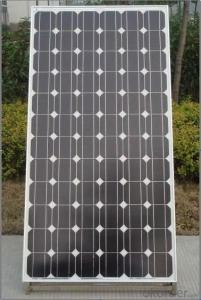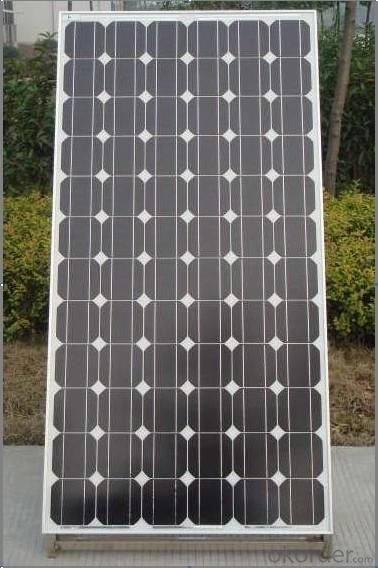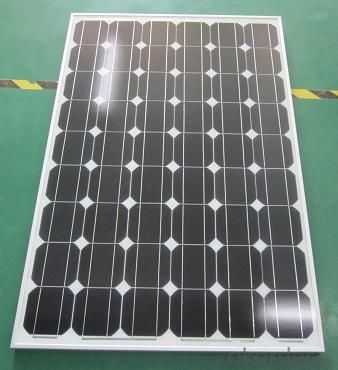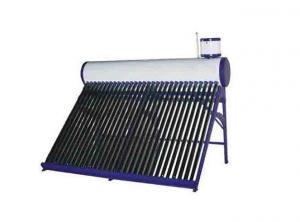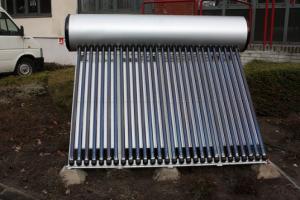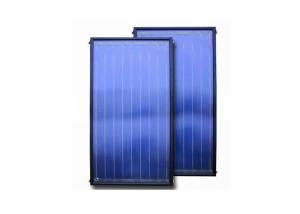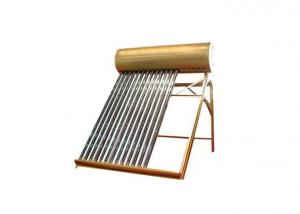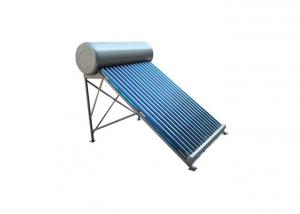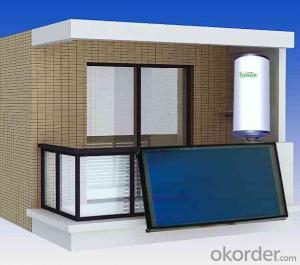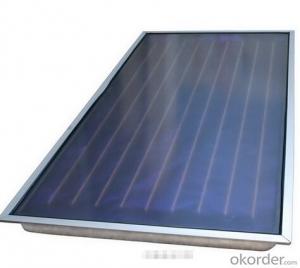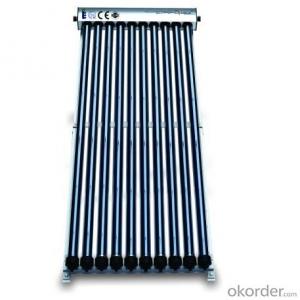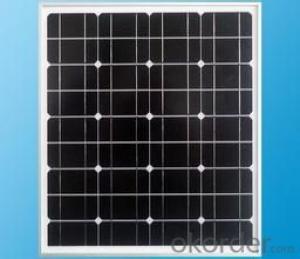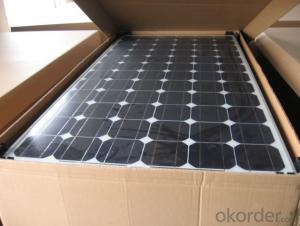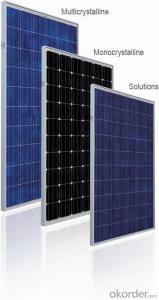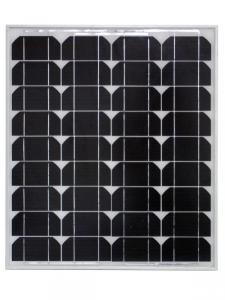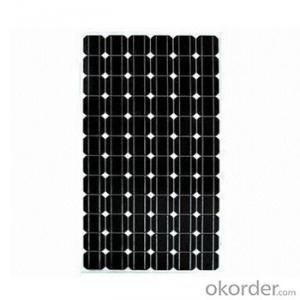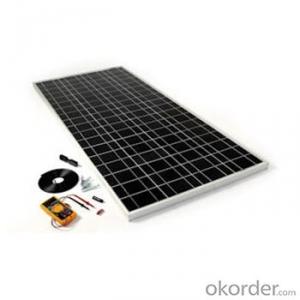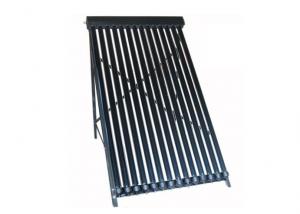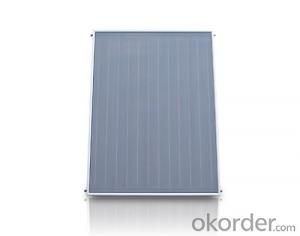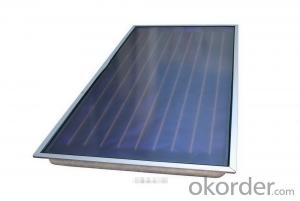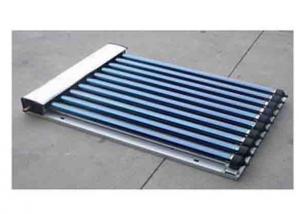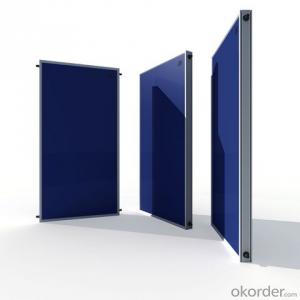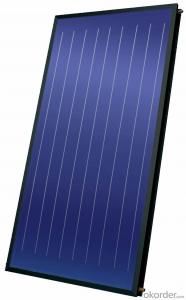Mars Solar Collectors - Solar Photovoltaic Monocrystalline Series Panels
- Loading Port:
- Tianjin
- Payment Terms:
- TT OR LC
- Min Order Qty:
- 1 pallet
- Supply Capability:
- 100000000 pallet/month
OKorder Service Pledge
OKorder Financial Service
You Might Also Like
Product Description:
Solar Monocrystalline Series Panels
Introduction of Solar Monocrystalline Series Panels
CNBM Solar photovoltaic (PV) Panel is designed for large electrical power requirements. It is the optimal choice for both on-grid and off-grid power systems. CNBM Solar panel offers high performance of power per square foot of solar array. Monocrystalline silicon(c-Si): often made using the Czochralski process. Single-crystal wafer cells tend to be expensive, and because they are cut from cylindrical ingots, do not completely cover a square solar cell module without a substantial waste of refined silicon. Hence most c-Si panels have uncovered gaps at the four corners of the cells.
Characteristics of Solar Monocrystalline Series Panels
I Solar Cell : High efficiency crystalline solar cell. Even if under the weak light, the solar module can produce maximum power output.
II Tempered glass (toughened glass): Anti-reflecting coating and high transmission rate glass increase the power output and mechanical strength of solar module.
III EVA and TPT: Using high quality EVA and TPT to prevent destroying and water.
IV AI frame: Without screw, corner connection. 6 holes on the frame can be installed easily.
V Junction box: Multi function junction box with water proof.
VI Long lifetime: ≥25 years; Less power decrease
VII Good performance of preventing from atrocious weather such as wind and hails.
VIII Resisting moisture and etching effectively, not effected by geology.
Standard Test Conditions of Solar Monocrystalline Series Panels
The opto-electrical specifications shown below are stabilized values being measured at Standard Test Conditions, Irradiance: 1000W/m2, Spectrum: AM1.5 at 25°C, The info below is subject to manufacturing tolerances. Where appropriate minutes of measurement are available and are used for the dimensioning of the installation.
Advantages of Solar Monocrystalline Series Panels
• CNBM Solar performance guarantees for 25 years
• 12 years guarantee for workmanship
• Timeliness of delivery
CNBM International Corporation's products including Monocrystalline Solar Panel, Polycrystalline Solar Panel have received and enjoyed famous reputation in many countries and regions in the world .As a solar panel supplier in China, we strive to provide our customers with excellent service, superior products and unmatched value.
Characteristics of Solar Monocrystalline Series Panels
Max Power Voltage Vmp (V) | 18.4V | 17.6V |
Max Power Current Imp (A) | 6.52A | 7.39A |
Open Circuit Voltage Voc (V) | 23.0V | 22.2V |
Short Circuit Current Isc (A) | 6.97A | 7.90A |
Max Power Pm (W) | 120W | 130W |
Temperature Coefficient of Cells
NOCT | 47℃±2℃ |
Temperature Coefficients of Isc (%/℃) | 0.064 |
Temperature Coefficients of Voc (%/℃) | -0.33 |
Temperature Coefficients of Pmp (%/℃) | -0.45 |
Mechanical Data Solar Monocrystalline Series
Power | 120W/130W |
Dimension | 1190/1470×670×30mm |
Weight | 9.5kg/11.7kg |
Tolerance | ±3% |
The dimension of the modules can be changed according to the demand of clients
Limits
Operating Temperature | –40 °C to +85°C |
Storage Temperature | –40 °C to +85°C |
Max System Voltage | 700V |
Guarantee Solar Monocrystalline Series Panels
Products Guarantee | 10 yrs free from defects in materials and workmanship |
Performance Guarantee | No less than 90% within 10yrs and no less than 80% within 25yrs |
Certificates | IEC, ISO, TUV, CE |
FAQ
We have organized several common questions for our clients,may help you sincerely:
1. What’s price per watt?
A: It’s depends on the quantity, delivery date and payment terms of the order. We can talk further about the detail price issue. Our products is high quality with lower price level.
2. Can you tell me the parameter of your solar panels?
We have different series of cells with different power output, both from c-si to a-si. Please take our specification sheet for your reference.
3. How do you pack your products?
We have rich experience on how to pack the panels to make sure the safety on shipment when it arrives at the destination.
4. Can you do OEM for us?
Yes, we can.
5. How long can we receive the product after purchase?
In the purchase of product within three working days, We will arrange the factory delivery as soon as possible. The perfect time of receiving is related to the state and position of customers. Commonly 7 to 10 working days can be served.
- Q: How do solar collectors perform in areas with high levels of airborne debris?
- Solar collectors can still function effectively in areas with high levels of airborne debris, although their efficiency may be slightly diminished. Airborne debris, including dust, pollen, and leaves, can accumulate on the surface of the solar collectors and hinder the amount of sunlight reaching the absorber plate. Consequently, this can result in a decrease in the amount of heat generated by the collectors. Nonetheless, modern solar collectors are designed to be efficient and somewhat self-cleaning. Many collectors are equipped with a smooth surface and are tilted at an angle to prevent debris buildup. Furthermore, certain collectors come with automatic cleaning mechanisms, such as brushes or water sprays, that periodically remove debris. Maintaining and cleaning the solar collectors regularly is crucial in areas with high levels of airborne debris. This may involve manual removal of accumulated debris or using water or air pressure to clean the surface. By ensuring the collectors remain clean, their performance can be maintained at optimal levels. It is important to note that the impact of airborne debris on solar collector performance can vary depending on the type and thickness of the debris, as well as the specific design and technology of the collectors. In some instances, the reduction in efficiency may be minimal, while in others, it could be more significant. To accurately assess the exact impact, it is advisable to consult with a solar energy professional who can provide a more precise evaluation based on the specific conditions and characteristics of the area.
- Q: Do solar collectors require direct sunlight to work?
- No, solar collectors do not necessarily require direct sunlight to work. They can still generate electricity or heat water even on cloudy days or in indirect sunlight. However, their efficiency may be reduced in such conditions.
- Q: Can solar collectors be used for heating warehouses and distribution centers?
- Yes, solar collectors can be used for heating warehouses and distribution centers. Solar thermal collectors can capture the sun's energy and convert it into heat, which can then be used to warm up the interior spaces of warehouses and distribution centers. This renewable energy source can help reduce reliance on traditional heating methods and lower energy costs, making it an environmentally friendly and cost-effective solution for heating large commercial spaces.
- Q: What is the payback period for a solar collector?
- The payback period for a solar collector can vary depending on factors such as the cost of installation, the energy savings achieved, and any available financial incentives or tax credits. On average, the payback period for a solar collector can range from 5 to 15 years.
- Q: Are there any limitations on the slope or angle of solar collectors?
- Yes, there are limitations on the slope or angle of solar collectors. The ideal angle for solar collectors is typically between 30 and 45 degrees, depending on the latitude of the installation site. This angle allows for optimal solar energy absorption throughout the year. However, solar collectors can still be effective at different angles, but their efficiency may vary. It's important to consider factors such as the geographical location, seasonal variations, and the specific application when determining the best slope or angle for solar collectors.
- Q: Can solar collectors be used for drying gardening tools?
- Drying gardening tools can be achieved by utilizing solar collectors. Solar panels or solar thermal collectors are examples of solar collectors that harness the energy from the sun to produce heat. This heat can effectively dry gardening tools. To dry gardening tools using solar collectors, you have two options. Firstly, you can place the tools in an open area that receives direct sunlight. Alternatively, you can keep the tools inside a greenhouse equipped with solar collectors. These solar collectors absorb sunlight and convert it into heat, warming up the surrounding air to facilitate drying. The use of solar collectors for drying gardening tools offers several benefits. It is an environmentally friendly and cost-effective method since it relies solely on solar energy, eliminating the need for additional energy or fuel and reducing reliance on non-renewable resources. Furthermore, it can lead to long-term energy savings. It is worth noting that the efficiency of solar collectors for drying gardening tools may vary depending on factors like weather conditions, the size of the collectors, and the required drying time. However, with proper planning and utilization, solar collectors can serve as a practical and sustainable solution for drying gardening tools.
- Q: Can solar collectors be used for generating electricity on shopping malls?
- Yes, solar collectors can be used for generating electricity on shopping malls. Solar collectors, such as photovoltaic panels, can be installed on the rooftops or facades of shopping malls to convert sunlight into electricity. This renewable energy source can help reduce the malls' reliance on traditional energy sources and lower their carbon footprint. Additionally, solar collectors can provide a sustainable and reliable source of electricity, especially during peak energy demand periods. Shopping malls often have large surface areas, making them suitable locations for solar installations. With the advancements in solar technology and decreasing costs, more and more shopping malls are adopting solar collectors to generate clean and green electricity.
- Q: Are solar collectors suitable for heating hotels and resorts?
- Yes, solar collectors are suitable for heating hotels and resorts. Solar collectors can efficiently harness the sun's energy and convert it into heat, making them a sustainable and cost-effective solution for heating large buildings like hotels and resorts. Additionally, solar heating systems can be integrated with existing heating infrastructure, providing a reliable and renewable source of warmth for guests while reducing the carbon footprint of the establishment.
- Q: How do solar collectors perform in cloudy conditions?
- Solar collectors perform less efficiently in cloudy conditions compared to sunny conditions. Cloud cover reduces the amount of direct sunlight reaching the solar collectors, which in turn decreases the amount of energy that can be harvested from the sun. However, solar collectors can still generate some amount of electricity or heat even in cloudy conditions. The extent to which they can perform depends on the thickness and type of clouds, as well as the design and efficiency of the solar collectors themselves. Some advanced solar collector technologies, such as those with tracking systems or concentrators, may be better equipped to capture diffuse sunlight and maximize energy production in cloudy conditions. Additionally, certain types of solar collectors, such as those with evacuated tubes or parabolic troughs, can still perform reasonably well even with limited direct sunlight. Overall, while solar collectors may not operate at their full capacity in cloudy conditions, they can still contribute to energy generation and provide a valuable renewable energy source.
- Q: Can solar collectors be used for generating electricity on mines?
- Yes, solar collectors can be used for generating electricity on mines. Solar collectors, such as photovoltaic panels or concentrated solar power systems, can harness the sun's energy and convert it into electricity. These systems can be installed on mines to provide a sustainable and renewable source of power, reducing the reliance on fossil fuels and decreasing carbon emissions. Additionally, solar power can be a cost-effective solution for remote mines that are not connected to the grid, providing a reliable source of electricity for mining operations.
Send your message to us
Mars Solar Collectors - Solar Photovoltaic Monocrystalline Series Panels
- Loading Port:
- Tianjin
- Payment Terms:
- TT OR LC
- Min Order Qty:
- 1 pallet
- Supply Capability:
- 100000000 pallet/month
OKorder Service Pledge
OKorder Financial Service
Similar products
Hot products
Hot Searches
Related keywords
